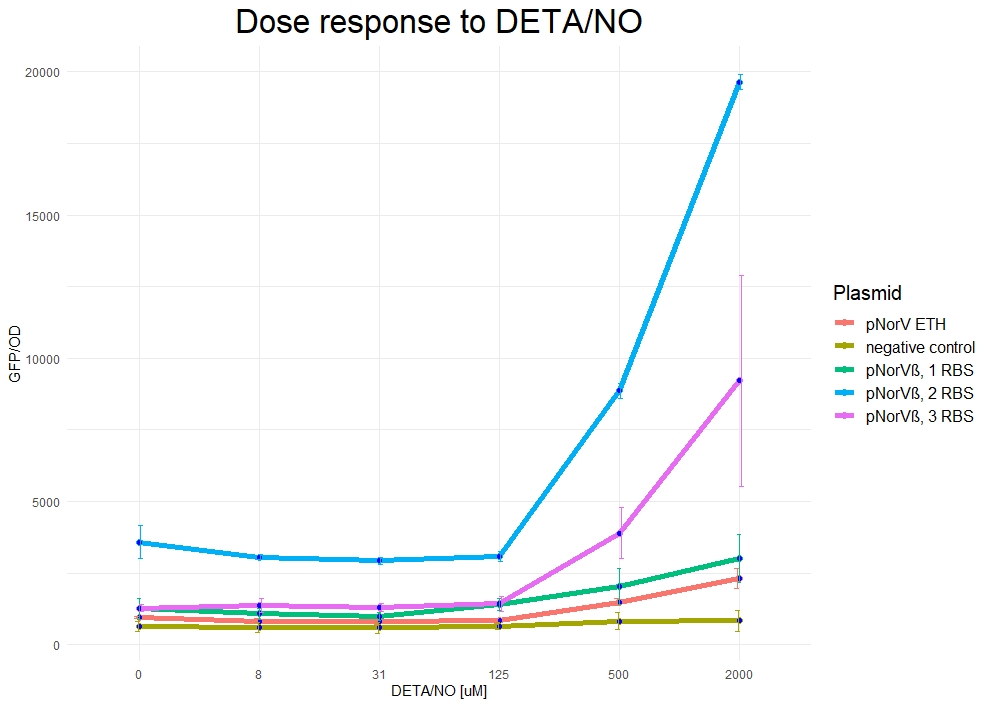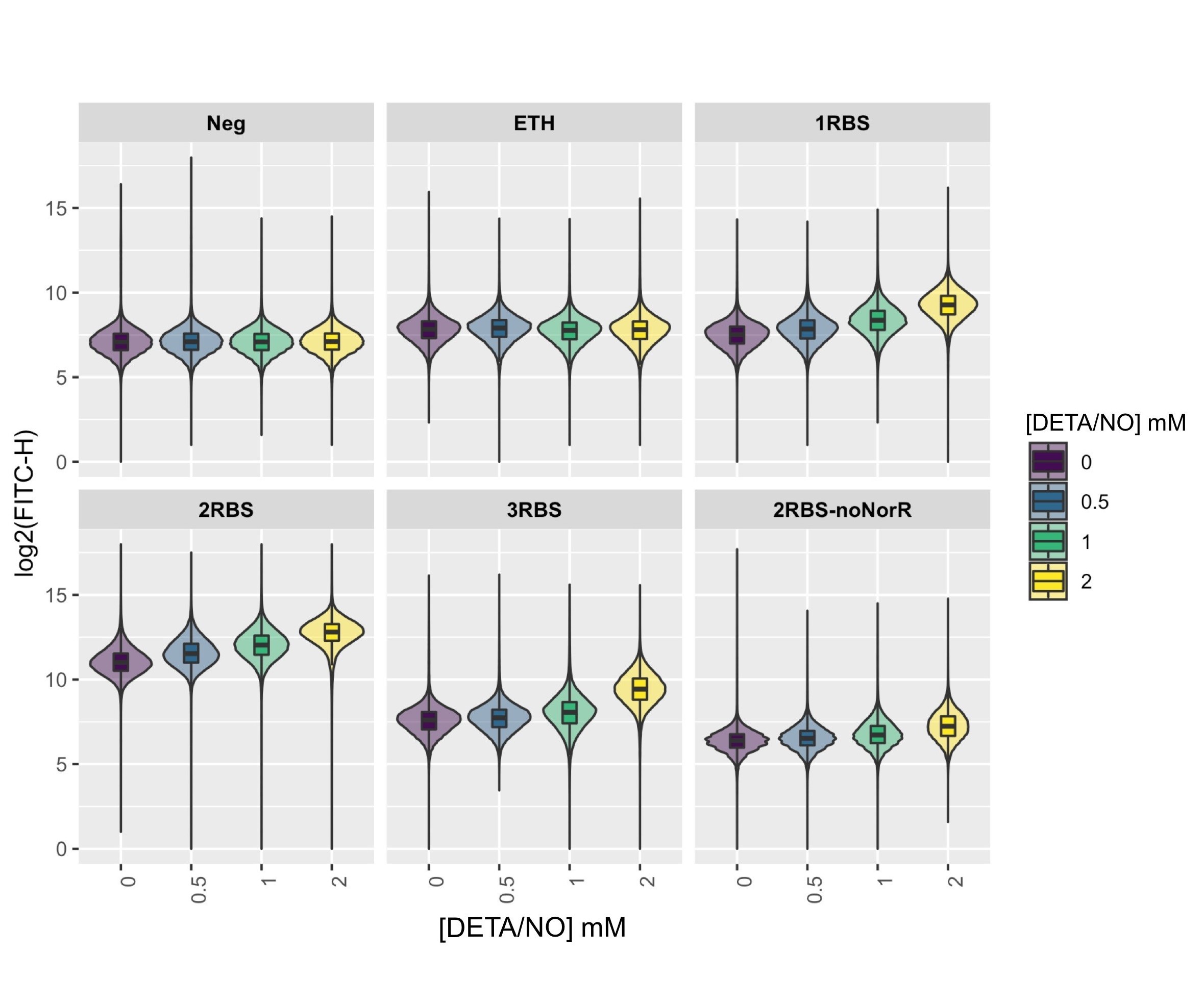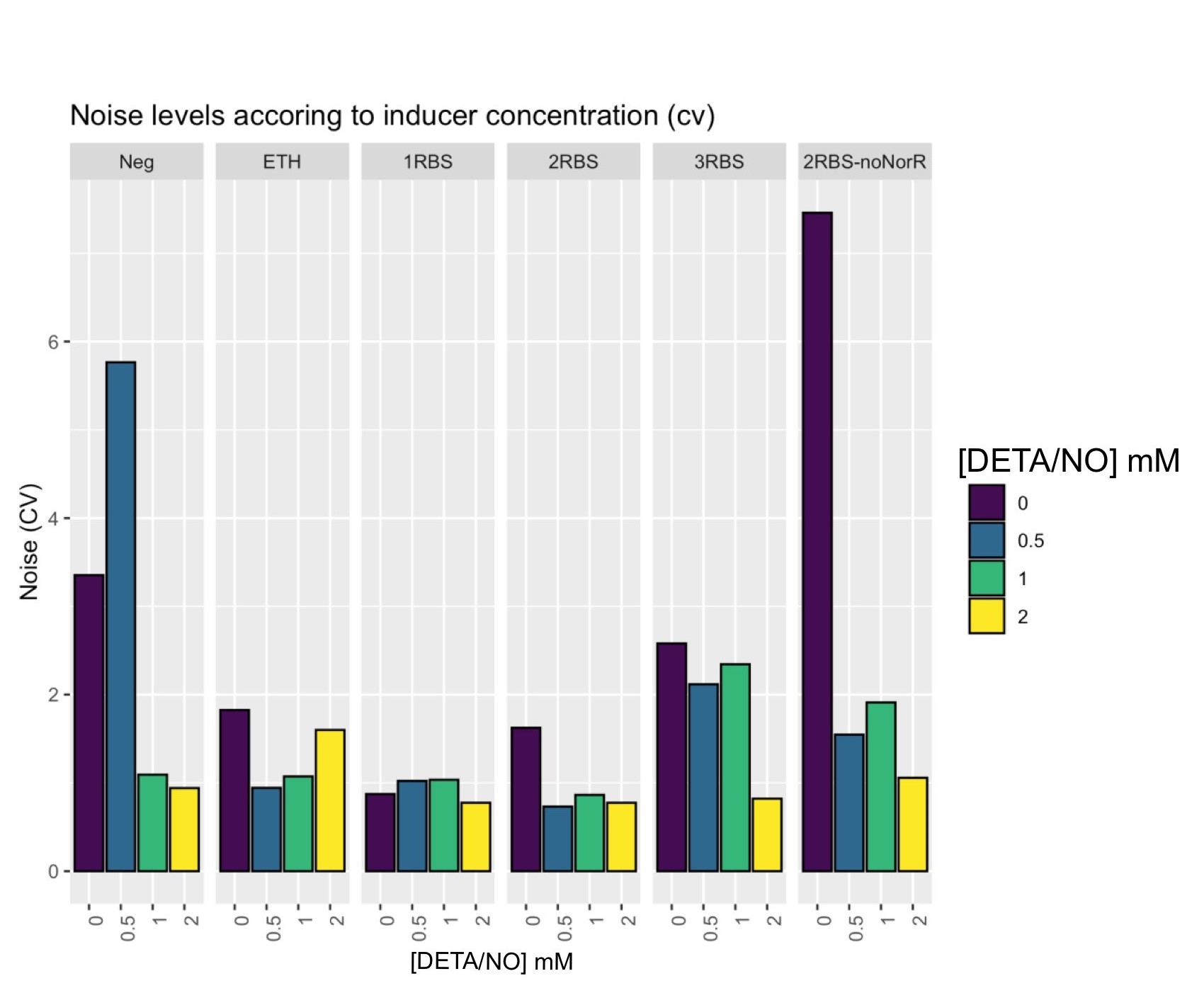Part:BBa_K4387006
Nitric Oxide Sensing Genetic Circuit With Two Ribosomal Binding Sites
Contents
Usage and Biology
In the frame of our project, we wanted to improve the construct BBa_K4387005 by adding one more ribosomal binding site to see if we could achieve a higher GFP response.
Thus this part consists of the inducible pNorVβ promoter, a superfolder GFP preceded by two strong ribosomal binding sites (BBa_B0029, BBa_B0034), the NorR regulator, and a double forward terminator. We chose a high-copy backbone from Twist Bioscience for this part. Due to the competitive binding of the activated and inactivated NorR on the promoter, we decided on this construct with a positive feedback loop that adjusted the levels of NorR based on the amount of nitric oxide present [1]. The presence of nitric oxide would activate pNorVβ to induce GFP and NorR expression. Thereby, we ensure that high amounts of NorR will be produced only when NO is present. href="https://static.igem.wiki/teams/5349/botchanlab-wet/pnorv-norr-assay2-detano-0-50-500.webp" href="https://static.igem.wiki/teams/5349/botchanlab-wet/pnorv-norr-assay2-detano-0-500.webp" href="https://static.igem.wiki/teams/5349/botchanlab-wet/pnorv-norr-assay3-detano-1000-vs-100.webp" href="https://static.igem.wiki/teams/5349/botchanlab-wet/pnorv-norr-assay3-detano-vs-h2o2.webp"
This construct was tested in the bacterial strain E.coli Nissle 1917.
Sequence and Features
- 10COMPATIBLE WITH RFC[10]
- 12COMPATIBLE WITH RFC[12]
- 21INCOMPATIBLE WITH RFC[21]Illegal XhoI site found at 726
- 23COMPATIBLE WITH RFC[23]
- 25COMPATIBLE WITH RFC[25]
- 1000COMPATIBLE WITH RFC[1000]
Characterization
Measuring parts with different approaches and comparing them to provide a more insightful and multilayered characterization is essential in Synthetic Biology. Here, we focused on two methods:
(i) time-lapse plate reader assays to measure the sensitivity of our circuit to NorR in a dynamic manner and under different concentrations of inducer; and
(ii) endpoint flow cytometry assays to measure the behavior of our circuits at the single-cell scale.
With the first assay, we uncovered essential kinetic information about the circuits on the populational level (every measurement is an average of the individual expression patterns in the sample). With the second assay, we delved deeper into the cell populations to characterize other essential properties of our system, such as expression noise and dose-dependent responses to different inducer concentrations.
We performed all analyses using in-house R scripts.
Time-Lapse Plate Reader Assay
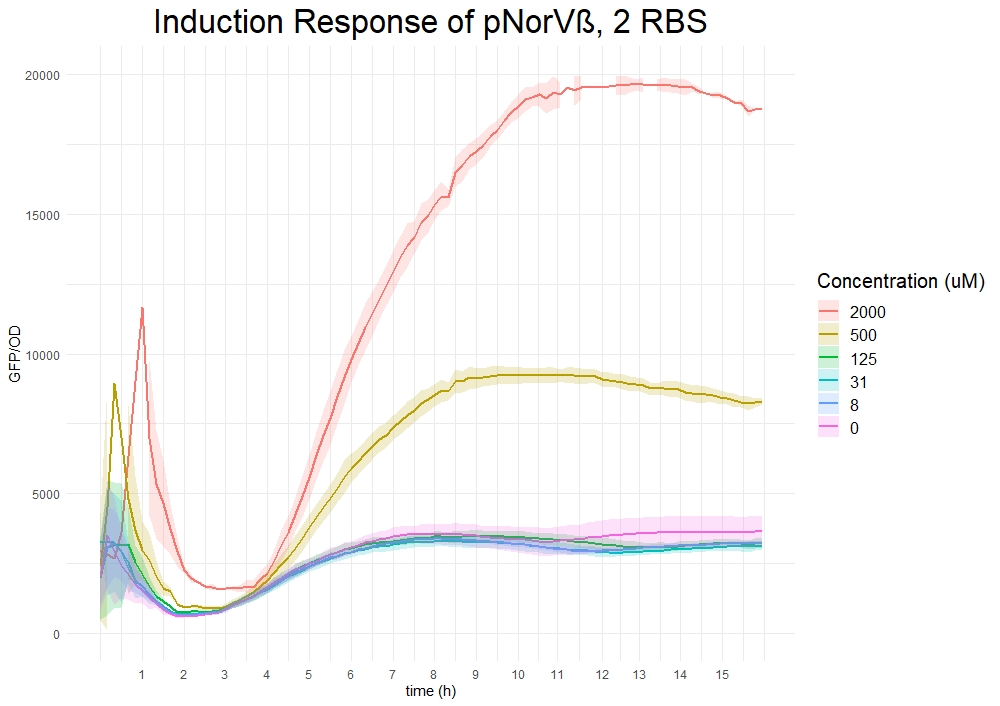
To make our experiments reproducible during plate reader assays (PHERAstar FSX - λEx: 485 nm, λEm: 530 nm), we measured each sample for 16 hours at 37°C and constant orbital shaking, using three biological replicates (three individual colonies per circuit) and three technical replicates (three wells per biological replicate).
We performed the data analysis as follows:
- Subtracted blanks from raw data
- Normalize GFP by OD600
- Calculate technical means of GFP/OD600 normalized data
- Calculate the biological means of GFP/OD600 normalized data
- Calculate the biological standard deviation of GFP/OD600 normalized data
- When necessary, perform imputation. Usually, the first normalized measurements are noisy and unreliable as OD600 values can be very low and significantly impact normalization. Thus, when individual normalized values are extremely high or low (sometimes negative due to blank correction), imputation was used following a na_kalman() function from the ImputeTS R package.
- Additional transformations, such as log transformations.
Hence, our plots show the averages and standard deviations for the biological replicates for each sample for each time point.
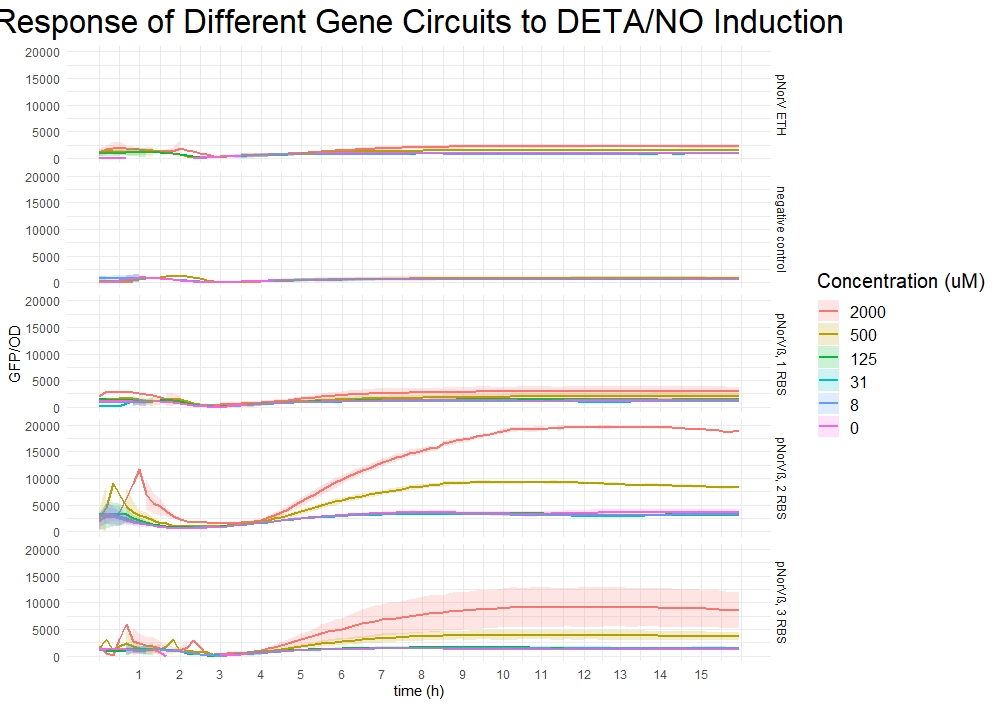
Because the standard deviations overlap, we thought that we might be able to reduce the standard deviations and get a clearer result if we had more samples. To get more samples, we also performed a flow cytometry.
Endpoint Flow Cytometry Assay
For the flow cytometry experiment, cell cultures were grown overnight in LB medium supplemented with antibiotic, diluted in 2mL of M9 (supplemented with glucose, cas amino acids, and an antibiotic) in a 1:10 ratio (v/v), induced with different NO concentrations and grown for 7 hours in a shaker (37C, 220 RPM). Samples were then chilled on ice to halt cell growth and diluted in 1mL of cold PBS (1:500 v/v ratio). A total of 100,000 cells per sample was measured in a BD FACSCanto II flow cytometer (FSC: 625V, SSC: 420V, FITC: 650V, Event threshold: FSC & SSC > 200, Channel: FITC (λEx 488 nm / λEm. 530/30 nm, High flow rate: ~ 10,000 events/s).
While figure 2a shows that the construct with pNorVβ and 2 RBS (BBa_K4387006) has higher overall GFP expression values, it is also leakier than the construct with pNorVβ and 1 RBS (BBa_K4387005) or the construct with pNorVβ and 3 RBS (BBa_K4387007). If high GFP expression is required, but some leakiness does not matter much, we recommend choosing BBa_K4387006. If lower leakiness is essential, but GFP expression does not need to be very high, we recommend using parts BBa_K4387005 or BBa_K4387007 instead.
References
- [1] Xiaoyu J. Chen, Baojun Wang, Ian P. Thompson, and Wei E. Huang et al. Rational Design and Characterization of Nitric Oxide Biosensors in E. coli Nissle 1917 and Mini SimCells ACS Synthetic Biology 2021 10 (10), 2566-2578 DOI: 10.1021/acssynbio.1c00223
| None |

